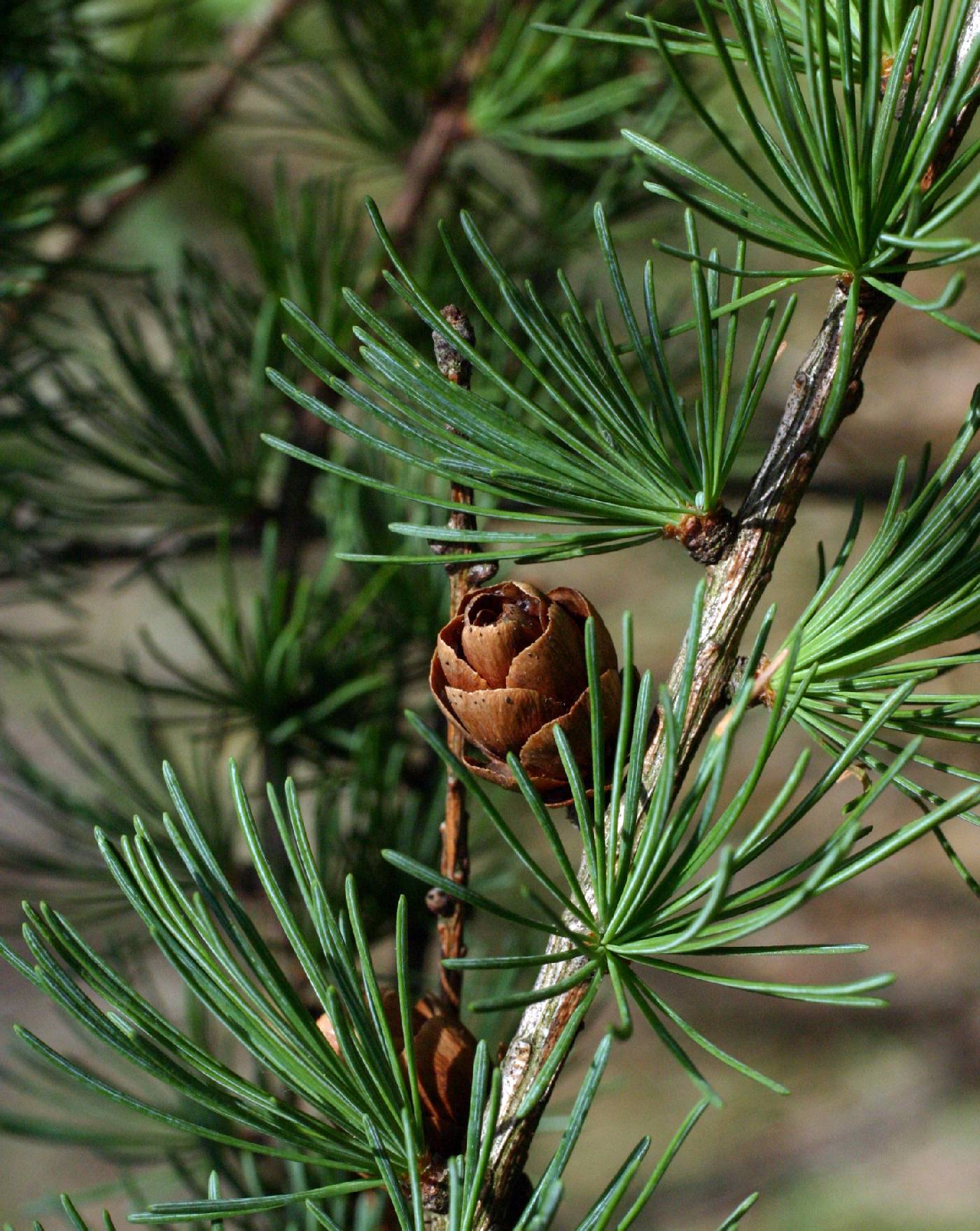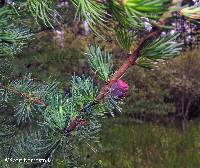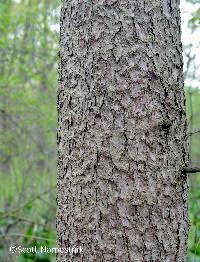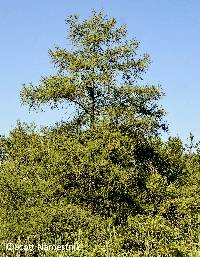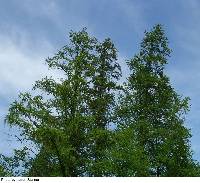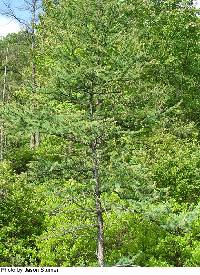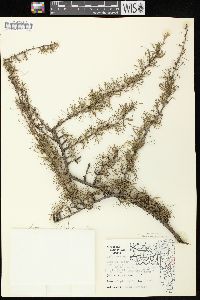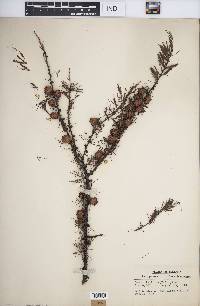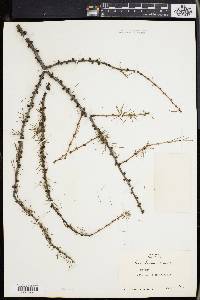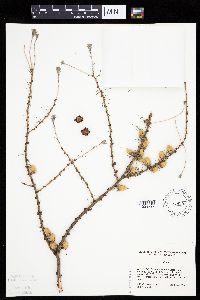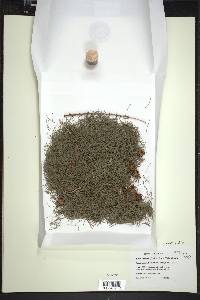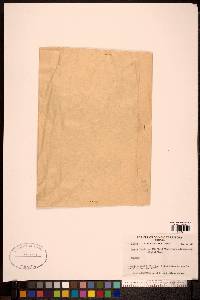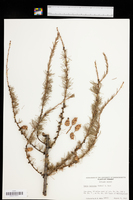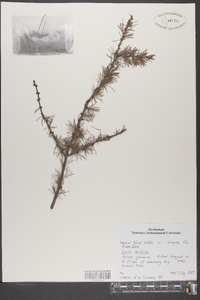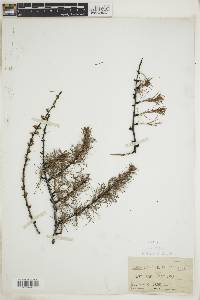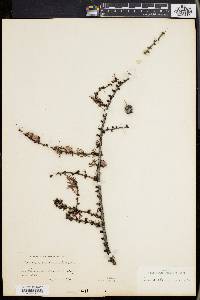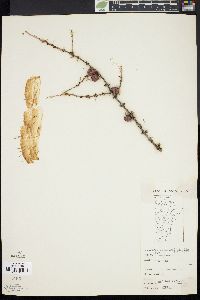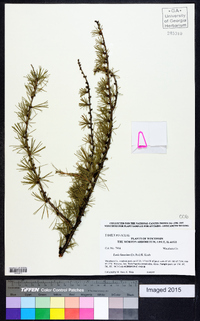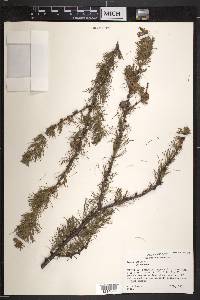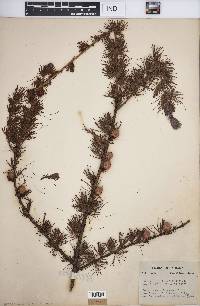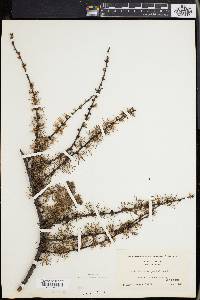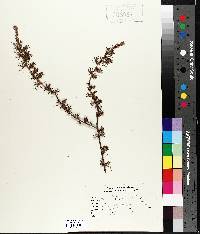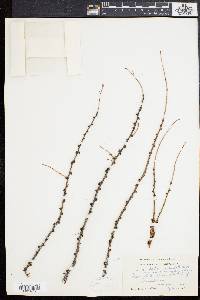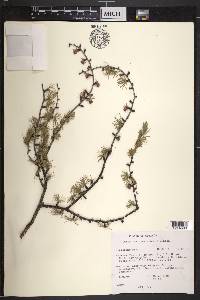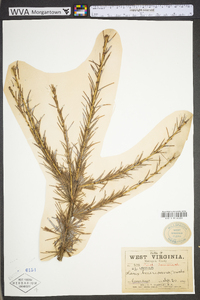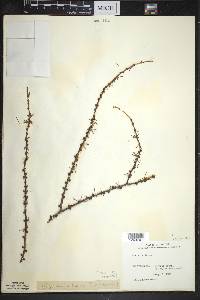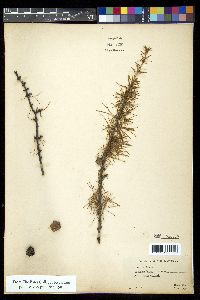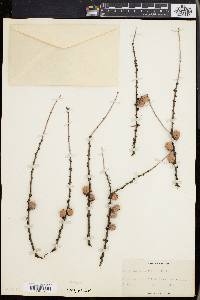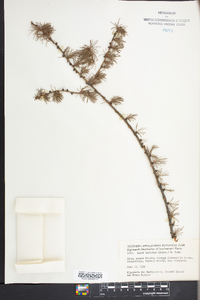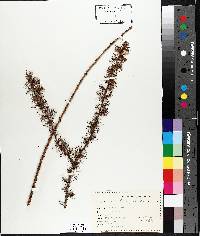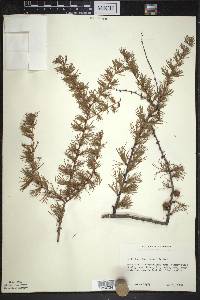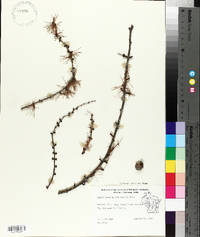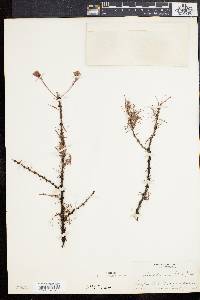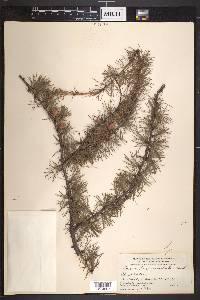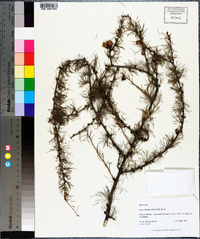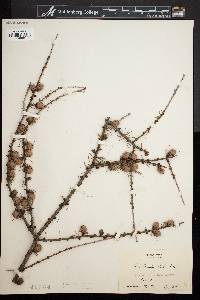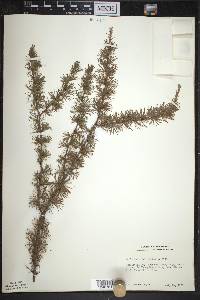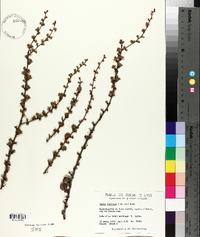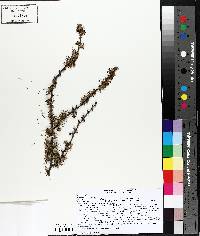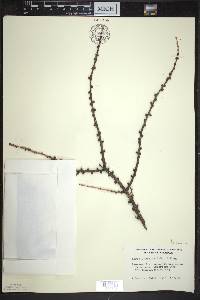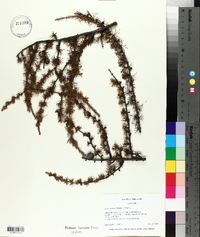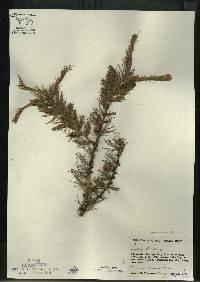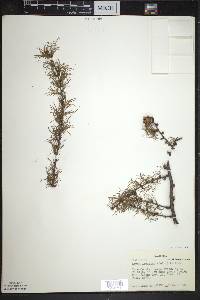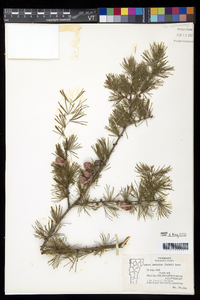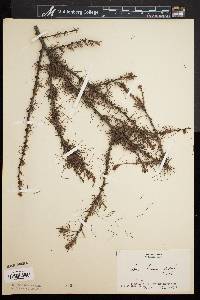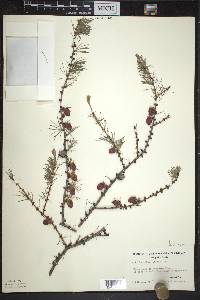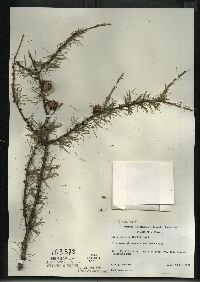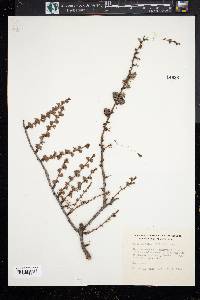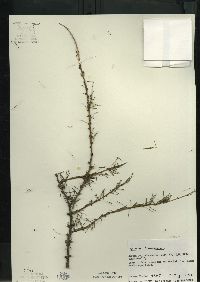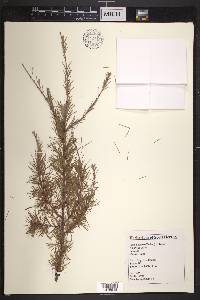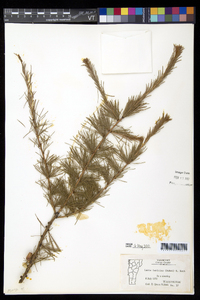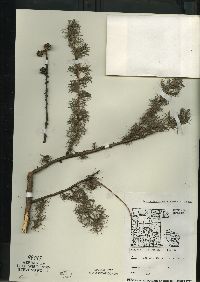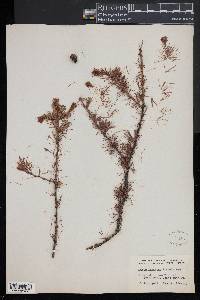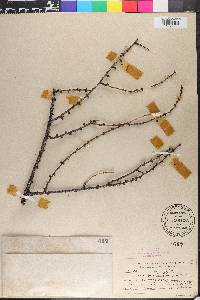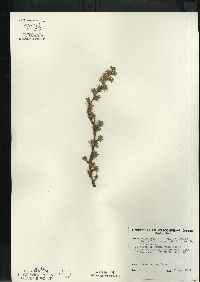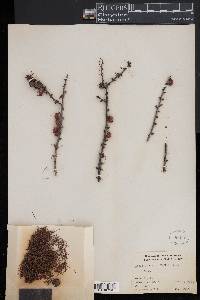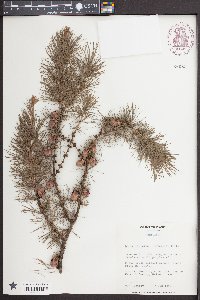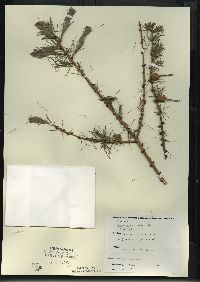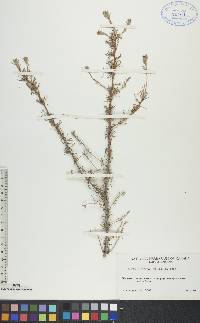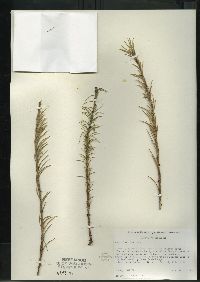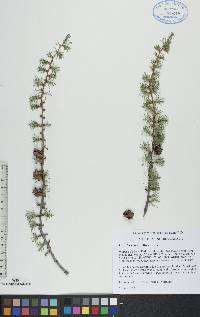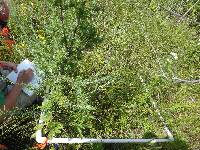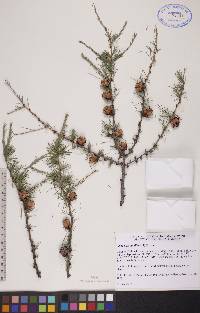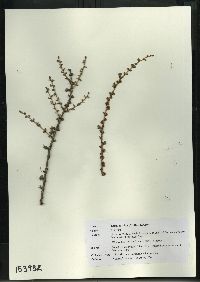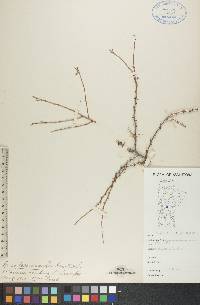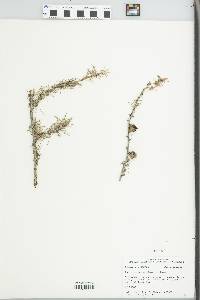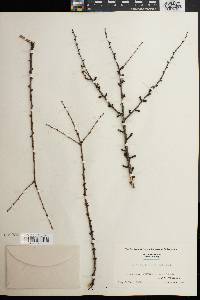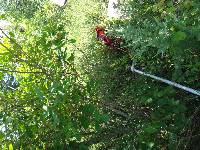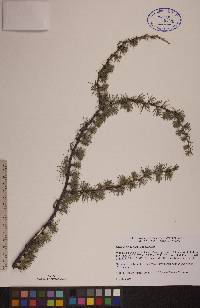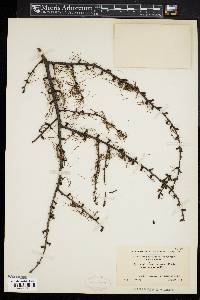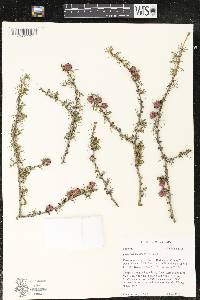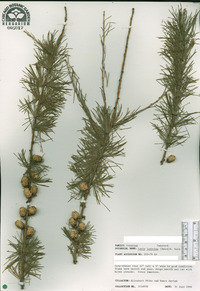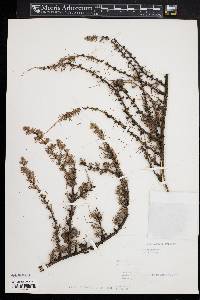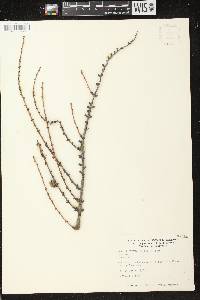
|
|
|
|
Family: Pinaceae
American Larch, more...tamarack
[Larix laricina f. lutea (Jaurès) Ouden & Boom, moreLarix laricina f. parvistrobus (Jaurès) Ouden & Boom, Larix laricina var. lutea Jaurès, Larix pendula (Aiton) Salisb., Pinus laricina Du Roi] |
Trees to 20m; trunk to 0.6m diam.; crown narrow, branches sparse. Bark of young trees gray, smooth, becoming reddish brown and scaly, inner layer red-purple. Branches horizontal or slightly ascending; twigs orange-brown, glabrous. Buds dark red, subtended by ring of hairlike bracts, glabrous. Leaves of short shoots 1--2cm × 0.5--0.8mm, 0.3--0.5mm thick, keeled abaxially, rounded adaxially, pale blue-green; resin canals 10--20µm from margins. Seed cones 1--2 × 0.5--1cm, usually on curved stalks 2--5 × 2--2.5mm, sometimes sessile on long shoots; scales 10--30, margins entire, brown-strigose to -tomentose at base; bracts mucronate or tipped by awn to 1mm, hidden by mature scales, at first dark red to violet, later turning yellow-brown. Pollen 53--65µm diam. Seeds with bodies 2--3mm, wings 4--6mm. 2 n =24. Boreal forests in wet, poorly drained sphagnum bogs and muskegs, also on moist upland mineral soils; 0--1200m; St. Pierre and Miquelon; Alta., B.C., Man., N.B., Nfld., N.W.T., N.S., Ont., P.E.I., Que., Sask., Yukon; Alaska, Conn., Ill., Ind., Maine, Md., Mass., Mich., Minn., N.H., N.J., N.Y., Ohio, Pa., R.I., Vt., W.Va., Wis. Disjunct Alaskan populations of Larix laricina , originally described as Larix alaskensis on the basis of narrower cone scales and bracts, are indistinguishable from other populations of the species. The wood of tamarack is used for railway ties, pilings, and posts; it formerly was used for boat construction. Slow-growing trees develop wood with high resin content, making it decay resistant but limiting its value for pulpwood. The bark contains a tannin, which has been used for tanning leather. Although tamarack is the most rapidly growing boreal conifer under favorable conditions, it is of little commercial interest because of insect and disease problems and its poor pulping properties. Plants of this species are often stunted in the far north and on mountain slopes.
Tree 12 - 25 m tall, trunk diameter 25 cm - 0.5 m Bark: reddish brown, thin, and scaly. Inner bark deep reddish purple. Twigs: thin and gray with a waxy coating (glaucous), becoming light orangish brown to dark brown with age. Buds: shiny reddish brown, small, and spherical. Form: pyramidal and open with spreading or ascending branches. Pollen cones: yellow, small, spherical, near the tips of branchlets. Needles: blunt at the tip, rounded on top, with a central ridge running lengthwise beneath, in clusters of ten to twenty on short, spirally arranged shoots. Needles bright green, 2 - 2.5 cm long, soft, flexible, turning yellow and dropping in autumn. Young seed cones: rose-colored, small, spherical, on branchlets in the upper crown. Pollination between cones occurs mid-April to late May. Mature seed cones: woody, upright, on a firm, curved stalk, lustrous light brown, 1 - 2 cm long, and egg-shaped with a rounded base and flat apex. Scales ten to twenty and mildly grooved. Seeds 2 - 3 mm long with light tan wings that are 4 - 6 mm long. Similar species: The similar Larix decidua differs by having larger seed cones (2 - 3.5 cm long) and longer needles (2.5 - 4 cm). Also, the twigs and needles of L. decidua exhibit a more yellowish cast. Habitat and ecology: Bogs, swamps, and other poorly-drained sites. Occurence in the Chicago region: native Notes: Larix laricina is sometimes grown as an ornamental. It can be severely attacked by the larch sawfly, which have decimated large numbers of old-growth trees. The wood is used for posts, poles, pulp, crates, boxes, interior finishing, and railroad ties. Etymology: Larix is the Latin word for larch, a tree that was valued for its strong wood. Laricina refers to its resemblance to the larch (of Europe). Author: The Morton Arboretum Tree to 20 m; lvs soft, very slender, 10-25 mm, light green; cones with 10-18 glabrous scales, red at first, pale brown and 1-2 cm when ripe. Mostly in bogs; Nf. and Lab. to Alas., s. to n. N.J., W.Va., O., n. Ill., and Minn. Gleason, Henry A. & Cronquist, Arthur J. 1991. Manual of vascular plants of northeastern United States and adjacent Canada. lxxv + 910 pp. ©The New York Botanical Garden. All rights reserved. Used by permission. From Flora of Indiana (1940) by Charles C. Deam Infrequent to frequent in bogs and on the low borders of lakes and streams throughout the lake area. It was formerly more or less common in many places that have been drained and are now farmed. It has suffered much during the past few years due to drought and is becoming scarce because of drainage and cutting. …… Indiana Coefficient of Conservatism: C = 10 Wetland Indicator Status: FACW |
|
|
|

